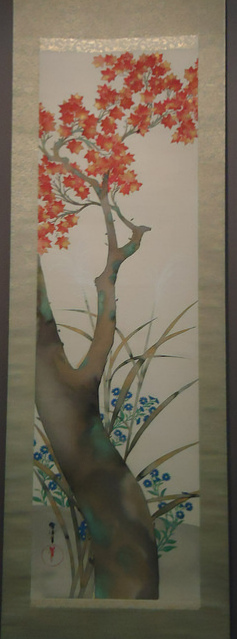Kamisaka Sekka
- Born: 1866
- Died: 1942
- Japanese: 神坂雪佳 (Kamisaka Sekka)
Kamisaka Sekka was a late Rinpa school artist of the Meiji period, known both for his paintings and for his work in lacquerwares and other decorative art forms.
Born into a samurai family, the son of an imperial bodyguard, Kamisaka Sekka originally trained in the Shijô school style of painting from age 16 to 26, before turning to Rinpa.[1] He traveled to the Glasgow World's Exposition in 1910, where he was exposed to Art Nouveau, and soon after his return to Japan, found a renewed interest in decorative arts & objects, and began working with laquerers, potters, and textile artists.
One of Sekka's most famous works is the Momoyogusa, a three-volume set of woodblock printed albums published in 1910. Each page of the albums is a reproduction of an individual painted image fully resembling Sekka's painted Rinpa style; these include a wide range of subjects, from flowers and leaves to birds, landscapes, and historical figures. The calligraphy on the album's cover was by Tomioka Tessai.
References
- Gallery label, "Autumn Maple," LACMA, M.2002.5.
- Gallery labels & interactive exhibit, "Momoyogusa," Metropolitan Museum.
- ↑ Gallery label, "Fishermen at Dawn," LACMA, M.2009.102.
